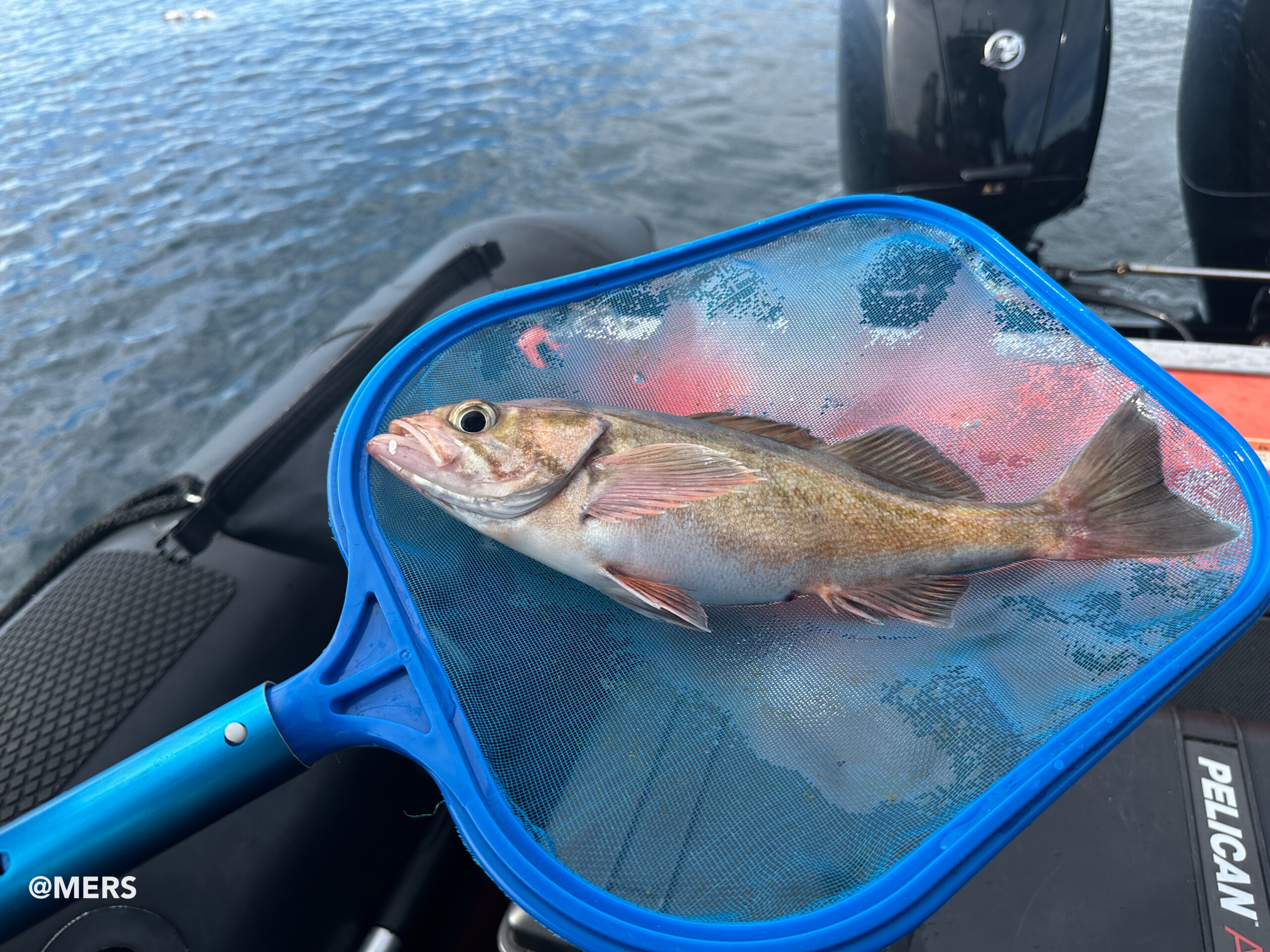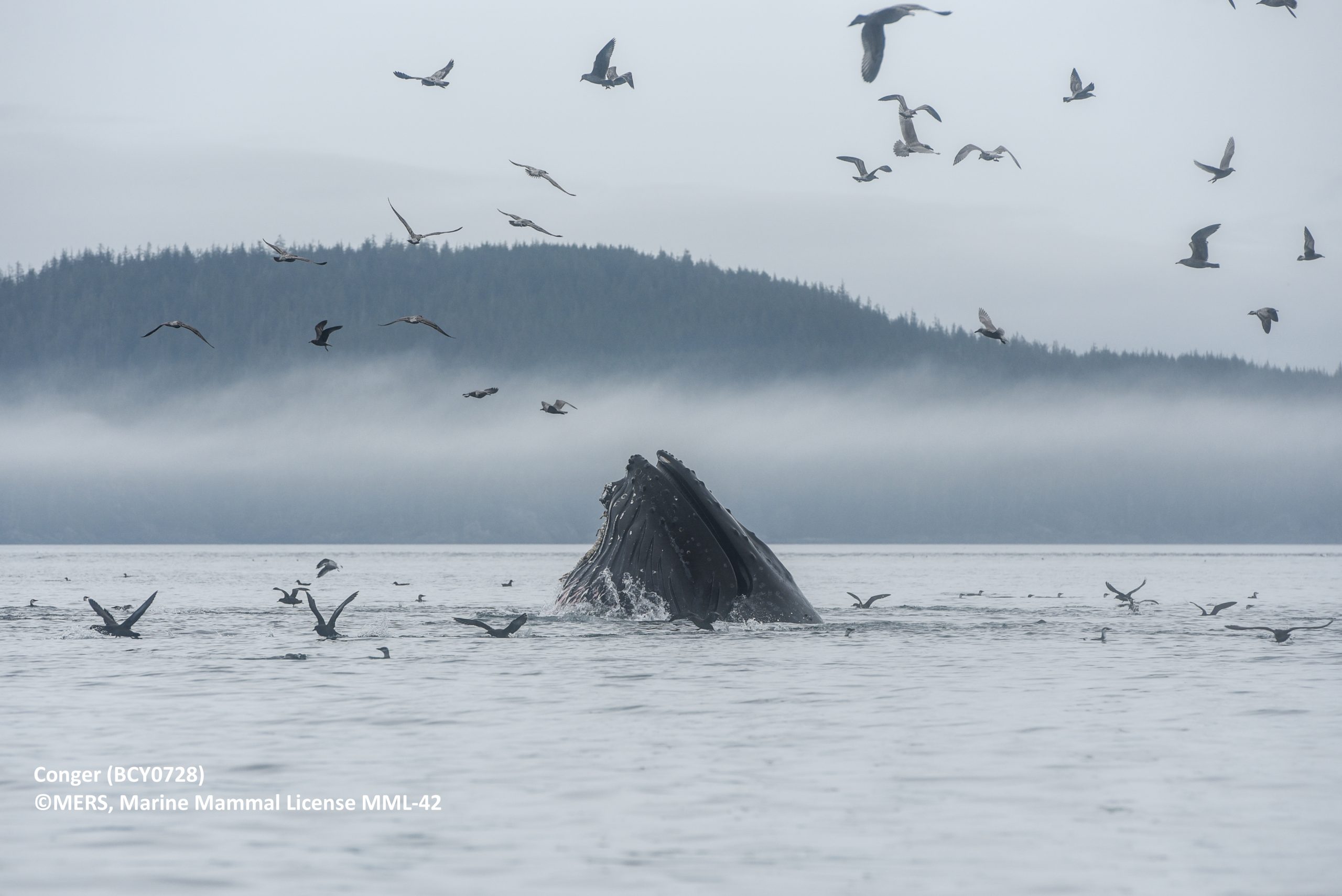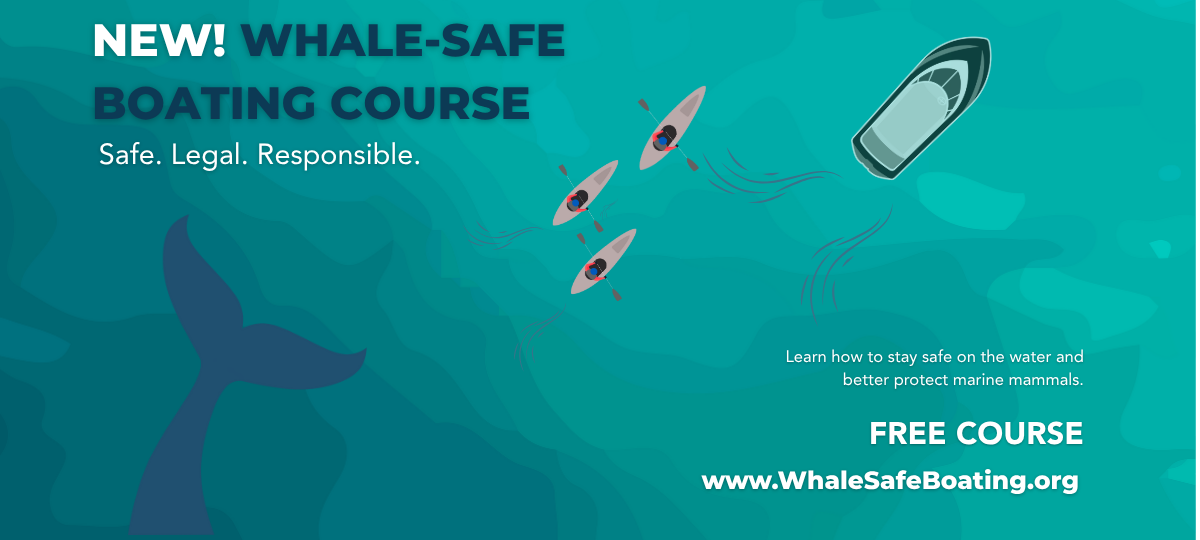Here are the results of the inaugural “How Wild!” contest. We partnered with the Canadian Conservation Photographers Collective in this contest to help shift the culture, language, and imagery of marine mammal viewing and photography from “how close” to “how wild”.
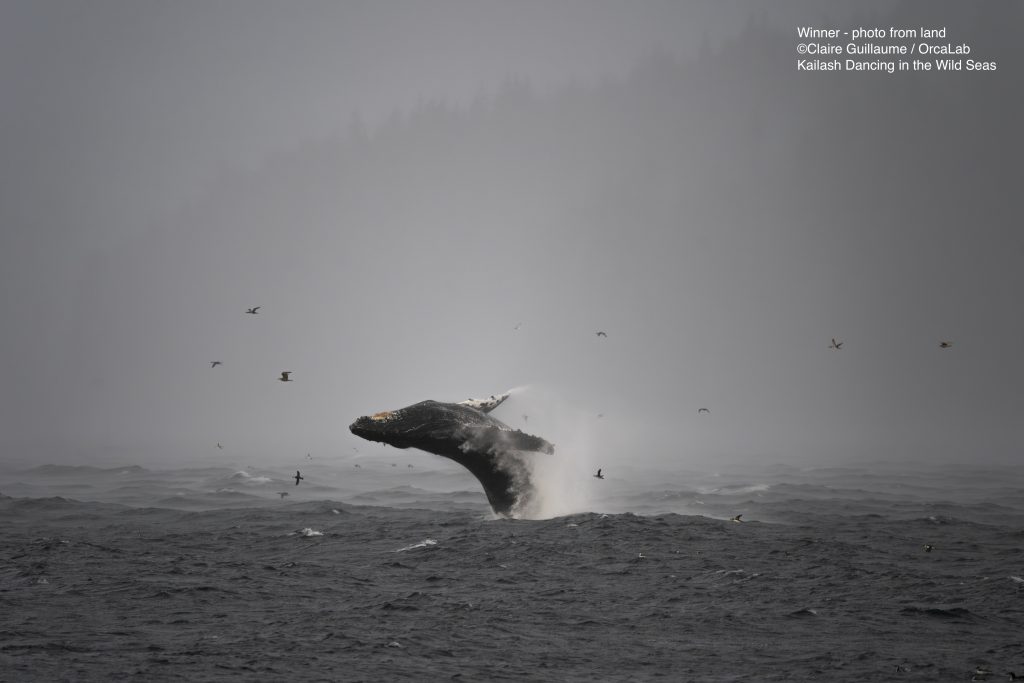
Winner in the category photo from land: Claire Guillaume – “Kailash Dancing in the Wild Seas” in Kwakwaka’wakw Territory with a Sony A7III and 600mm lens. “It was early November in Blackney Pass and about twenty humpback whales were seen daily foraging and socializing from the OrcaLab deck. It takes dedication to identify them, which I enjoy doing with passion, as I stand outside in the wind waiting for the next surfacing, or stare at pictures of dorsal fins and flukes for hours on a screen. It’s all worth it, and sometimes I’m lucky to witness powerful and graceful scenes, like Kailash here, breaching in such a dramatic setting.”
Contest Winners
- Photo from land: Claire Guillaume
- Photo from vessel: Kristiana Bardsnes
- Video from land: Stan Novotny
- Video from vessel: Sophie Ward
Honourable Mentions
- Photo from land: Laura Lefurgey-Smith
- Photo from vessel: Nate Small
- Video from land: Jake Tinkler-Josephi
- Video from vessel: Justine Charollais
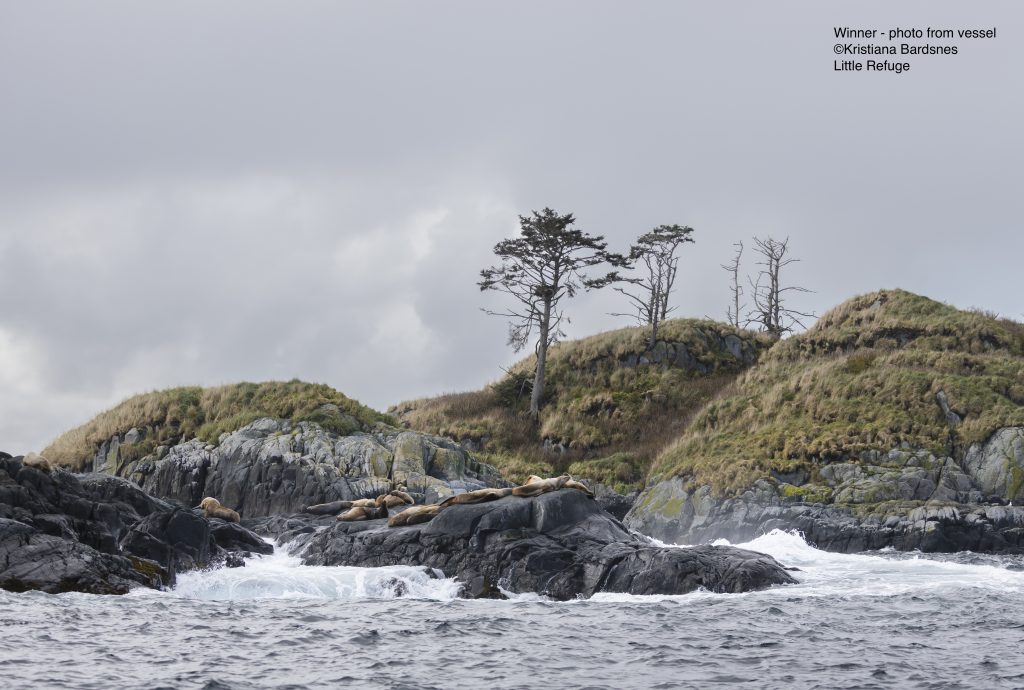
Winner in the category photo from vessel: Kristiana Bardsnes -“Little Refuge”, taken in Gwa’sala-Nakwaxda’xw Territory with a Canon EOS R and 100 to 400mm lens. “The Steller Sea Lions were all perched on their little island of refuge, creating a beautiful contrast between the black rocks and their beige bodies amongst a little grassland ecosystem off the coastal rainforest.”
Photography Prioritizing the Wild
Wildlife imagery is often valued based on how large animals appear in the frame, with narratives that emphasize proximity. The potential impacts associated with such images and discourse can feed the desire or expectation of others to get close, which can have significant negative impacts for animals and people.
In the case of marine mammals, close approaches contribute to increased underwater noise, vessel collisions, and confusion about laws and best practices. Disturbance from vessels can exacerbate the effects of other threats such as reduced prey availability and chemical pollution.
Winner in the category video from land: Stan Novotny – “Orca Hunt ” in Kwakwaka’wakw Territory with a Canon R5 100 to 500mm lens. “I visited Port McNeill in March 2024, hoping to witness the herring spawn, when I spotted Bigg’s Orcas in the distance. While documenting sea lions, the T55 matriline appeared, checking out the local Steller Sea Lions.”
Contest Impact
MERS and the CCPC are deeply grateful to everyone who entered the contest and supported its promotion. The response to its mission was extremely positive and included more than 140 photo and video submissions to the contest.
All submissions were required to meet the following ethical criteria:
- Images must be taken legally in British Columbia, outside minimum avoidance distances and not using drones.
- Marine mammals must comprise less than 20% of the frame.
- Images must not suggest interaction with the photographer (e.g., stress behavior, eye contact).
- Submissions must include the First Nations Territory where the image was taken and details of the equipment used (e.g., lens focal length).
Many of the contest entries, beyond the winners, will serve as valuable resources for our education and conservation efforts to reduce threats to marine mammals.
The contest builds on the For the Whales responsible whale-watching campaign, a collaboration between MERS, 4VI/Tourism Vancouver Island, and the North Island Marine Mammal Stewardship Association.
Winner in the category video from vessel: Sophie Ward – “The Singing Giant” in Kwakwaka’wakw Territory with a iPhone 14 ProMax. ” I’ve had the honour of being a guest at Inukshuk the Humpback’s concerts twice now…both times with no one else around, watching from our boat, engine off and hydrophone in the water during an evening cruise. His playfulness sparks my imagination each time I see his fluke or pectorals slap the water, or as he launches himself into pirouettes . . . His giggling gurgles and burps in between songs, as I try to imagine what life below the surface is like. What HIS life is like in the wild waters of the west coast, away from the people, and the boats. Just Inukshuk and his trumpet.”
Prizes
Each winner in the 4 contest categories will receive:
- Promotion with photo credit and tags on MERS and CCPC social media.
- Featured in Collective Magazine (fall edition).
- 50% off and free shipping for a canvas, fine-art, or custom picture frame with Vancouver on Canvas (up to a value of $500 of the initial amount, for regular priced items).
- $100 gift certificate for camera gear.
- Book Sea Otters – a Survival Story by Isabelle Groc (contest judge).
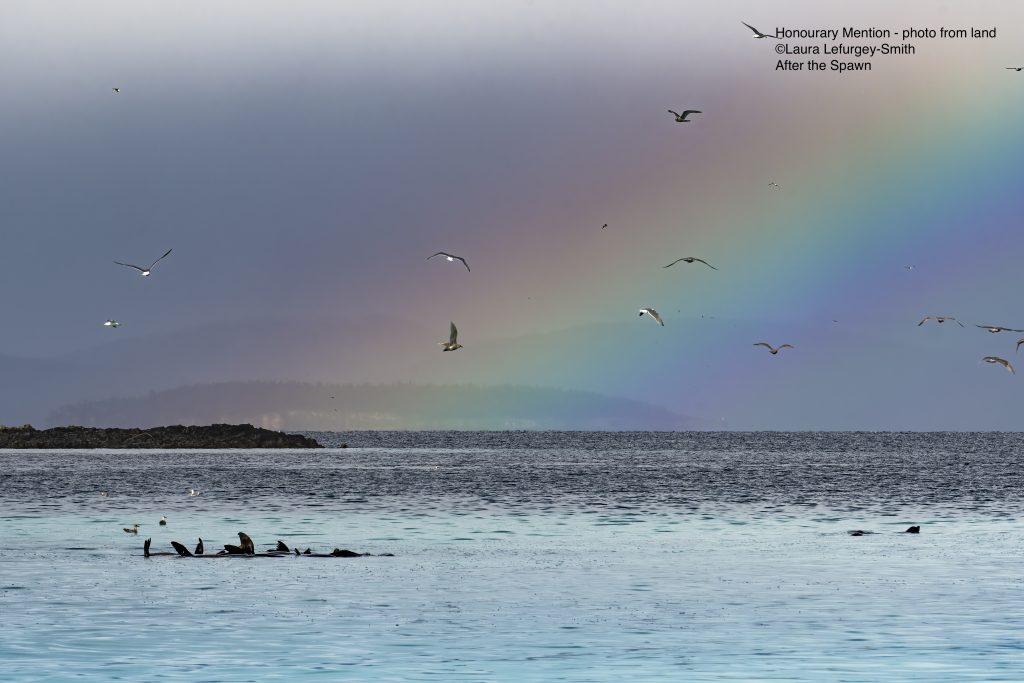
Honourary mention in the category photo from land: Laura Lefurgey-Smith – “After the Spawn: A Tapestry of Life & Colour”, taken in Snaw-Naw-As Territory with a Nikon D7500 and 200 to 500mm lens. “Sitting on the rocky shoreline of Beachcomber Regional Park, I watched the incredible spectacle of the herring spawn unfold. California Sea Lions swam past, herring clutched in their jaws, while gulls plunged from above, eager to snatch an easy meal. Harbour Seals bobbed at the surface, their heads rising and falling as they took in the action. Nearby, a group of Steller Sea Lions floated together, their fins raised above the water—no doubt full from the feast. Then, as if nature itself was celebrating, a rainbow appeared over the scene. The sun illuminated the turquoise waters, casting a dazzling array of colours that made the moment truly unforgettable.”
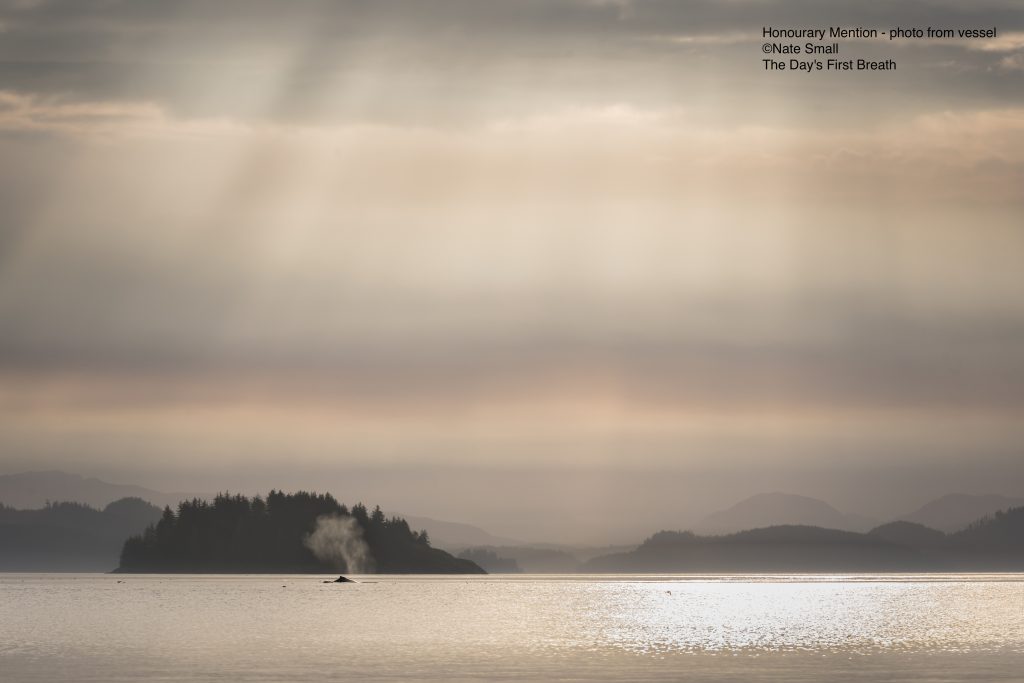
Honourary mention in the category photo from vessel: Nate Small – “The Day’s First Breath”, in ʼNa̱mǥis / Kwakwa̱ka̱’wakw Territory with a Nikon D750 and 100 to 400 mm lens. “September mornings are my favourite time of the year. As you come around the corner, the sun is rising behind Stubbs Island, and the first blows of the day are backlit and glimmering. It’s always a battle between just stopping and enjoying the whole scene, or grabbing the camera and trying to capture it.”
Honourary Mention in the category video from land: Jake Tinkler Josephi – “The Hunt” in K’ómoks Territory with a Canon 5 D Mark IV 150 to 600mm lens. “My 5-year-old daughter and I drove to Goose Spit. We were fortunate enough to witness a pod of Orcas hunting, using their skills to teach one another as they worked together to take down a sea lion.”
Honourary Mention in the category video from vessel: Justine Charolais – “The Spy Hop” in Kwakwaka’wakw Territory with a Fujifilm X-T5 and 100 to 400mm lens. “A whale watching trip led us to the A42s, a beautiful family of Northern Residents and a group of Pacific White-Sided Dolphins swimming along with them. As you can hear in the video, people are gasping, so mission accomplished to show the beauty of these animals without disturbing them.”
Compilation of some of the 140+ entries into the contest.
